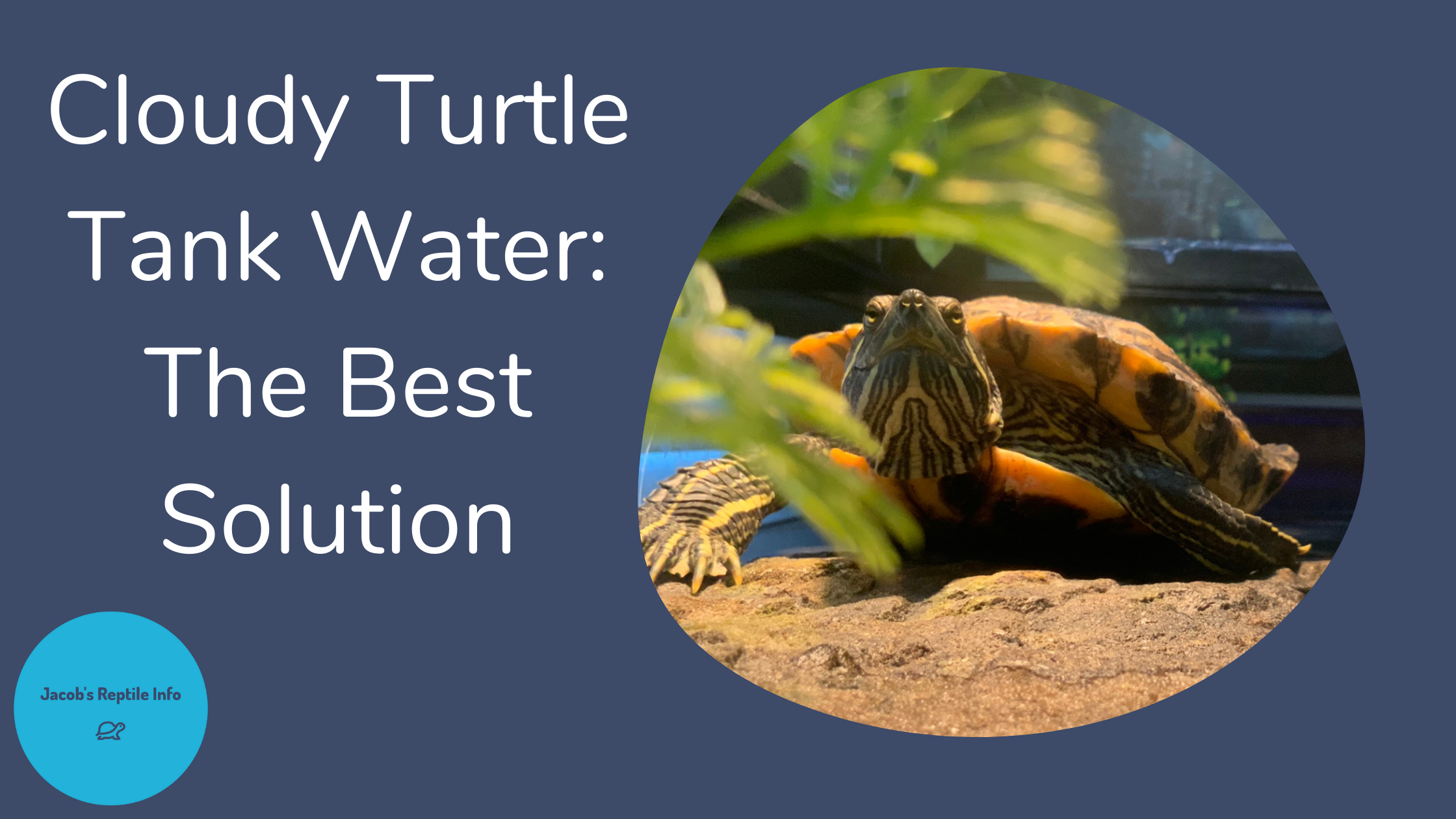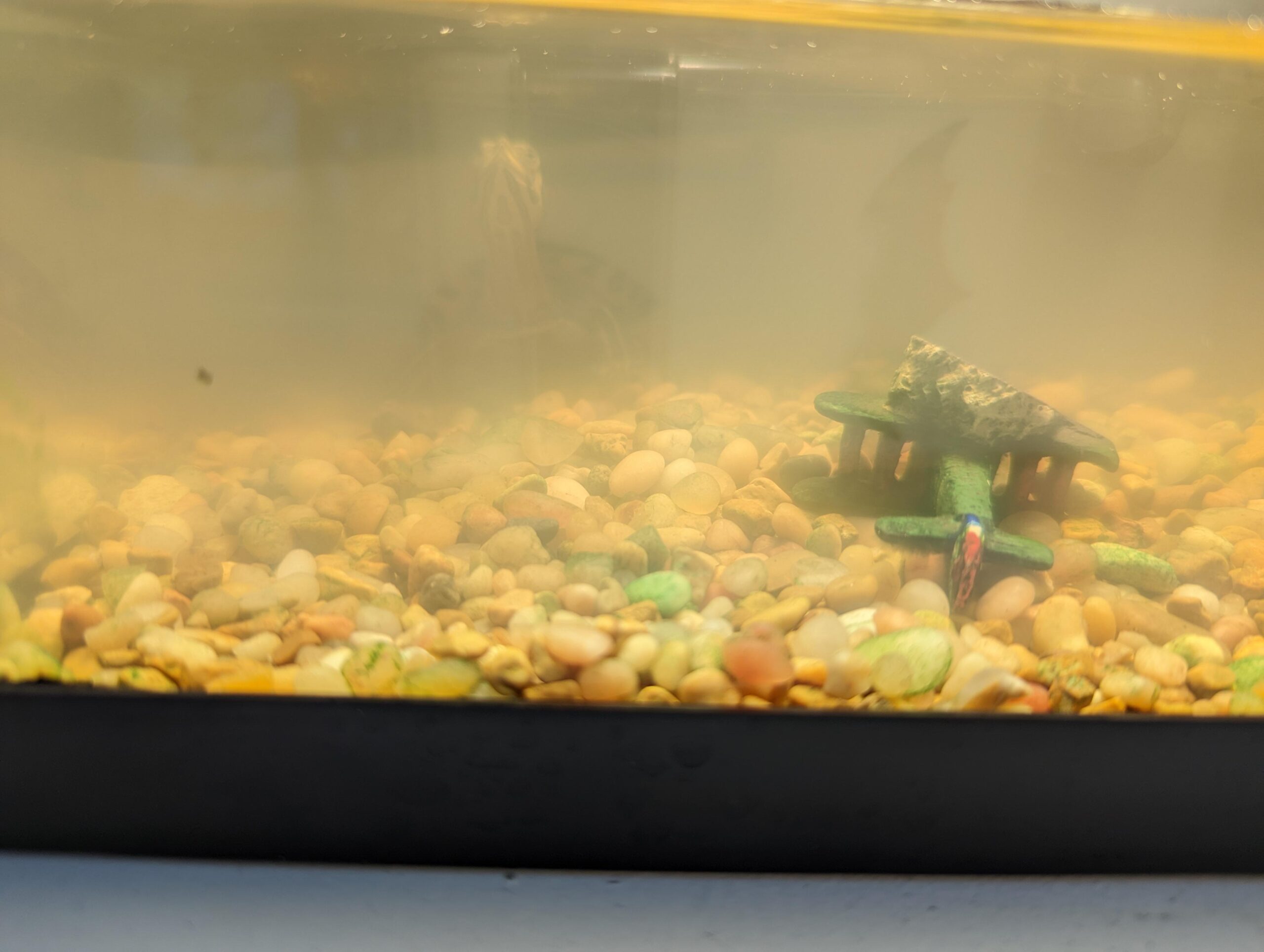Your turtle tank may be cloudy due to overfeeding, inadequate filtration, or high ammonia levels. These factors can lead to an imbalance in the tank’s ecosystem, causing cloudy water.
Understanding the root cause of the cloudiness is crucial in maintaining a healthy environment for your turtle. Cloudy water in a turtle tank can be concerning, but with proper care and maintenance, it can be resolved. We will discuss the common reasons for cloudy turtle tank water and provide practical tips to improve water clarity.
By addressing these issues, you can ensure a clean and healthy habitat for your beloved pet. Let’s delve into the potential causes of cloudy water in turtle tanks and explore effective solutions for this common problem.

Credit: www.youtube.com
Common Causes Of Cloudy Turtle Tanks
Discovering why your turtle tank is cloudy is crucial to maintaining a healthy environment for your aquatic pets. Let’s explore the common causes of cloudy turtle tanks:
Overfeeding
Overfeeding is a major culprit for cloudy turtle tanks. Excess food leads to accumulated waste in the tank, increasing ammonia levels and causing cloudiness.
Incomplete Filtration System
An inadequate filtration system fails to remove waste and debris effectively, allowing them to build up and cloud the water in your turtle tank.

Credit: www.reddit.com
Impact On Turtle Health
As a responsible turtle owner, you always want to ensure that your pet is healthy and happy. However, sometimes turtle tanks can become cloudy, which can negatively impact your turtle’s health. Here are some ways cloudy water can affect your turtle:
Decreased Water Quality
Cloudy water is often a sign of decreased water quality. This can be caused by a variety of factors, such as overfeeding, overstocking, or inadequate filtration. Poor water quality can lead to a build-up of harmful toxins such as ammonia and nitrite, which can cause stress and illness in turtles.
To ensure good water quality, make sure to clean your turtle tank regularly and maintain proper filtration. Avoid overfeeding and overstocking, as this can lead to excess waste in the tank. Additionally, consider using a water conditioner to remove harmful chemicals from tap water before adding it to your turtle tank.
Risk Of Infections
Cloudy water can also increase the risk of infections in your turtle. Bacteria and other pathogens can thrive in dirty water, and if your turtle has any open wounds or injuries, they are more susceptible to infection. Additionally, poor water quality can weaken your turtle’s immune system, making them more vulnerable to illness.
To prevent infections, make sure to maintain good water quality and keep your turtle’s tank clean. If your turtle does have any wounds or injuries, make sure to clean and treat them promptly. Additionally, ensure that your turtle is getting a balanced diet and adequate vitamin and mineral supplements to help boost their immune system.
Methods To Clear Cloudy Turtle Tanks
When it comes to maintaining a healthy environment for your pet turtle, a cloudy tank can be a cause for concern. Cloudiness in a turtle tank can be attributed to various factors such as uneaten food, waste, and algae buildup. However, there are effective methods to clear cloudy turtle tanks and ensure a clean and healthy habitat for your turtle.
Regular Water Changes
One of the most crucial methods to clear a cloudy turtle tank is to perform regular water changes. This involves replacing a portion of the tank water on a weekly basis to remove accumulated waste and debris. By conducting weekly water changes, you can help maintain water quality and reduce cloudiness in the tank.
Cleaning Decor And Substrate
Another essential step in clearing a cloudy turtle tank is cleaning the decor and substrate. Remove any uneaten food, waste, or algae from the tank decorations and substrate. Regular cleaning of these elements can prevent the buildup of organic matter that contributes to cloudiness.
Adjusting Filter Settings
Proper filtration is key to maintaining a clear turtle tank. Adjusting filter settings can help improve water circulation and filtration efficiency. Ensure the filter is functioning optimally and consider upgrading to a more powerful filter if necessary. Adequate filtration can aid in removing debris and maintaining water clarity.
Preventive Measures For Maintaining Water Clarity
Preventive measures for maintaining water clarity are essential to ensure the health and well-being of your turtle. Cloudy water in a turtle tank can be caused by a variety of factors, including overfeeding, inadequate filtration, and poor tank maintenance. By implementing the following preventive measures, you can maintain clear and healthy water for your turtle.
Proper Feeding Practices
Avoid overfeeding your turtle, as uneaten food can lead to an accumulation of waste and contribute to cloudy water. Feed your turtle appropriate portions of high-quality food and remove any uneaten food promptly to maintain water clarity.
Routine Filter Maintenance
Regular cleaning and maintenance of your tank’s filtration system is crucial for preventing cloudy water. Follow the manufacturer’s guidelines for filter maintenance, including changing filter media and cleaning filter components to ensure efficient water filtration.

Credit: www.jacobsreptileinfo.com
Conclusion
If your turtle tank is cloudy, proper maintenance and filtration are key. Regular water changes and cleaning can help maintain water clarity. Ensure your tank is not overstocked, and check for any decaying matter. Clear water is essential for your turtle’s health and well-being.
Keep your tank clean for happy turtles.






Leave a Reply